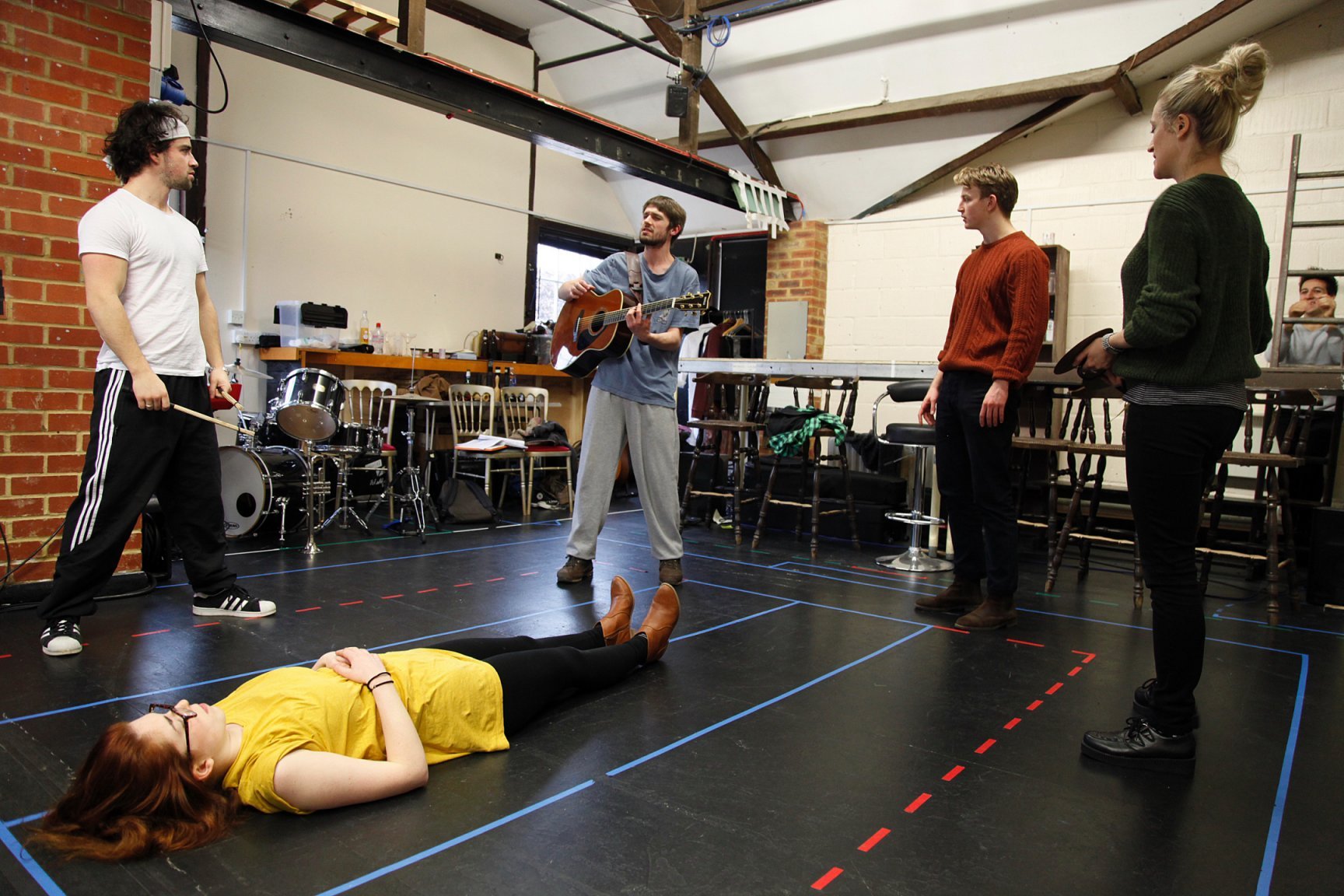
An immersive experience
At The Watermill Theatre, the cast lives on site – alongside ducks and chickens – for the whole production process. New Artistic Director Paul Hart reveals the effect on the company.
A chicken walked into the rehearsal room this week, midway through a particularly heightened moment of dialogue in Romeo and Juliet. Animal interruptions can be a regular occurrence at The Watermill, home to a flock of ducks, chickens, two kittens and a puppy. A love of animals was listed in my job description.
It’s now four months since I settled into the Artistic Director’s house, located at the entrance to the theatre. Working here is an experience as immersive as it gets. Cast and artists live and work on site throughout the production process, doubling the hamlet’s population, especially when there’s a big musical production.
Many of the best ideas we’ve had for this show have been explored in conversations continued from the rehearsal room over dinner or drinks in the pub
Now that I’m a permanent fixture here rather than working as a visiting director, I’ve become more in tune with the sense of community and family the setting evokes. This applies not only to the visiting artists and actors, but also to our in-house team, from front-of-house to development and communications, technical and wardrobe departments. Everyone works together with a huge commitment for a common goal.
Away from distractions, mostly thanks to intermittent phone/wifi, and surrounded on all sides by countryside, the rehearsal process here feels different to other venues and can have a big impact on the dynamics of the company. In a sense, it is a kind of splendid isolation.
While the time we have to bring a show together is as limited as anywhere else, it feels like we have more space to explore ideas and work more collaboratively. If you need a break, you can wander by the river or practice lines to an audience of ducks. Many of the best ideas we’ve had for this show have been explored in conversations continued from the rehearsal room over dinner or drinks in the pub up the lane. No one has to worry about commuting back to digs – and no one has any excuses for being late the next morning.
There’s a long tradition that the artistic director cooks dinner at the end of the first dress rehearsal, so I’ll soon be juggling pots and pans and notebooks, running from auditorium to kitchen, hoping not to burn the chilli.
What has struck me most about the theatre so far is that that despite its small size (220 seats), it is a theatre that can handle big ideas. Our audiences are loyal and love to be challenged, so I’m keen to present a broad range of material for them to get stuck into. This first season represents just a taster of the work I hope to present over time: new writing, great rediscoveries and adaptions, including Alan Bennett’s Untold Stories staged with a live trio onstage and Rona Munro’s Watership Down (made more poignant as the real Watership Down is just up the road).
The Watermill has always been about cultivating and showcasing new talent, and over the coming years I hope to help nurture some of the country’s best new talent – actors, writers and composers – and have a raft of commissions already in the pipeline.
Paul Hart is Artistic Director of The Watermill.
www.watermill.org.uk
History of The Watermill
Evidence suggests there’s been a mill at Bagnor in Berkshire since the Domesday Book, with the current buildings dating back to the 1820s. In the 1960s The Watermill was bought with a view to turning it into a concert hall, but the acoustics weren’t right. Then in 1965, a local amateur theatre group saw its potential and staged the first production, The Taming of the Shrew. A London producer, fed up with the city, then asked if he could put on a professional season. So in 1967 he staged a three-week run of Under Milk Wood (starring David Jason at the beginning of his career), but the show never finished as none of the actors were paid. The first full-length season was launched in 1968, with the stable block converted to provide living accommodation for the actors. Jill Fraser and her husband James Sargant bought the theatre in 1981 and since then it has gained a reputation for producing Shakespeare and musical theatre and developing its actor–musician style.
Join the Discussion
You must be logged in to post a comment.